About Shopify SKU
An SKU (Stock Keeping Unit) is a unique, internal identifier assigned by merchants to each product variant in Shopify. It usually comprises alphanumeric characters and encodes attributes like variant, size, color, or product type.
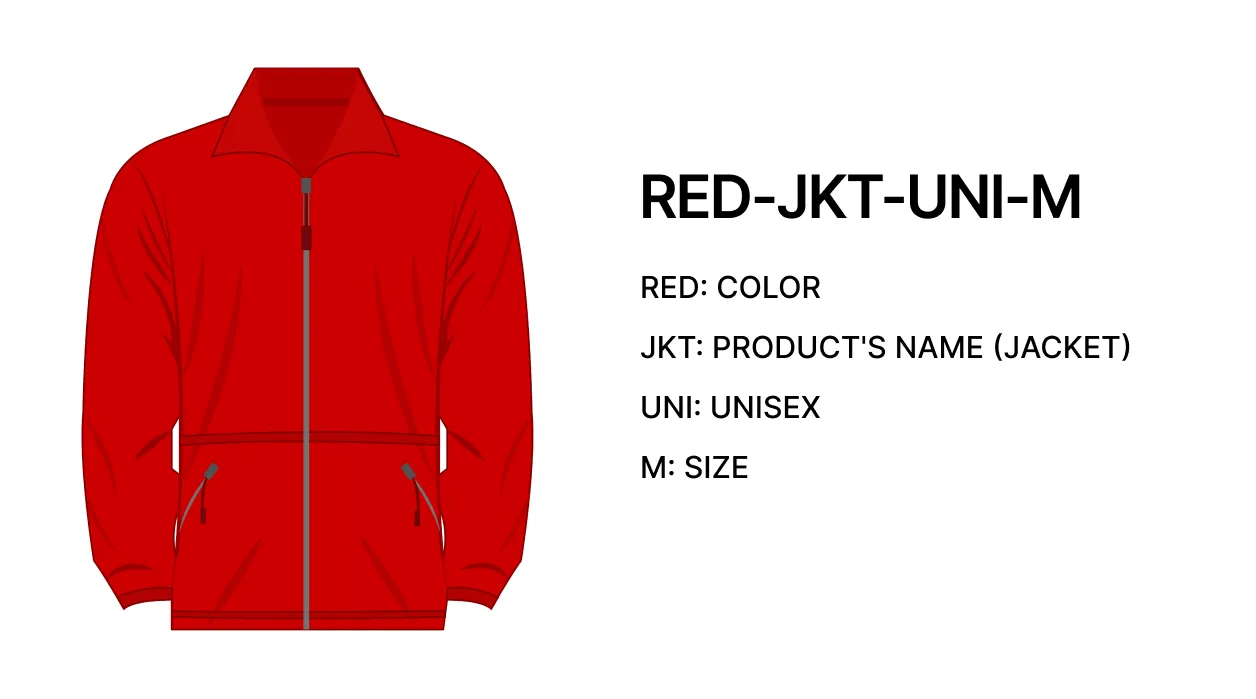
Why assign SKUs:
- Enables inventory tracking, sales reporting, and accurate fulfillment.
- Required for Shopify Fulfillment Network, 3PLs, barcode scanners, and third‑party apps.
- Helps you analyze performance at the variant level (vital for GemX A/B testing tracking via SKUs).
- Each variant must have a unique SKU (duplicates may trigger warnings and lead to syncing errors).
How to Add or Edit an SKU in Shopify
You can use the different options below to add and edit your Shopify SKUs.
Option 1: Single Product or Variant
Step 1: Log in to Shopify Admin > Products > click on a product to open its settings.
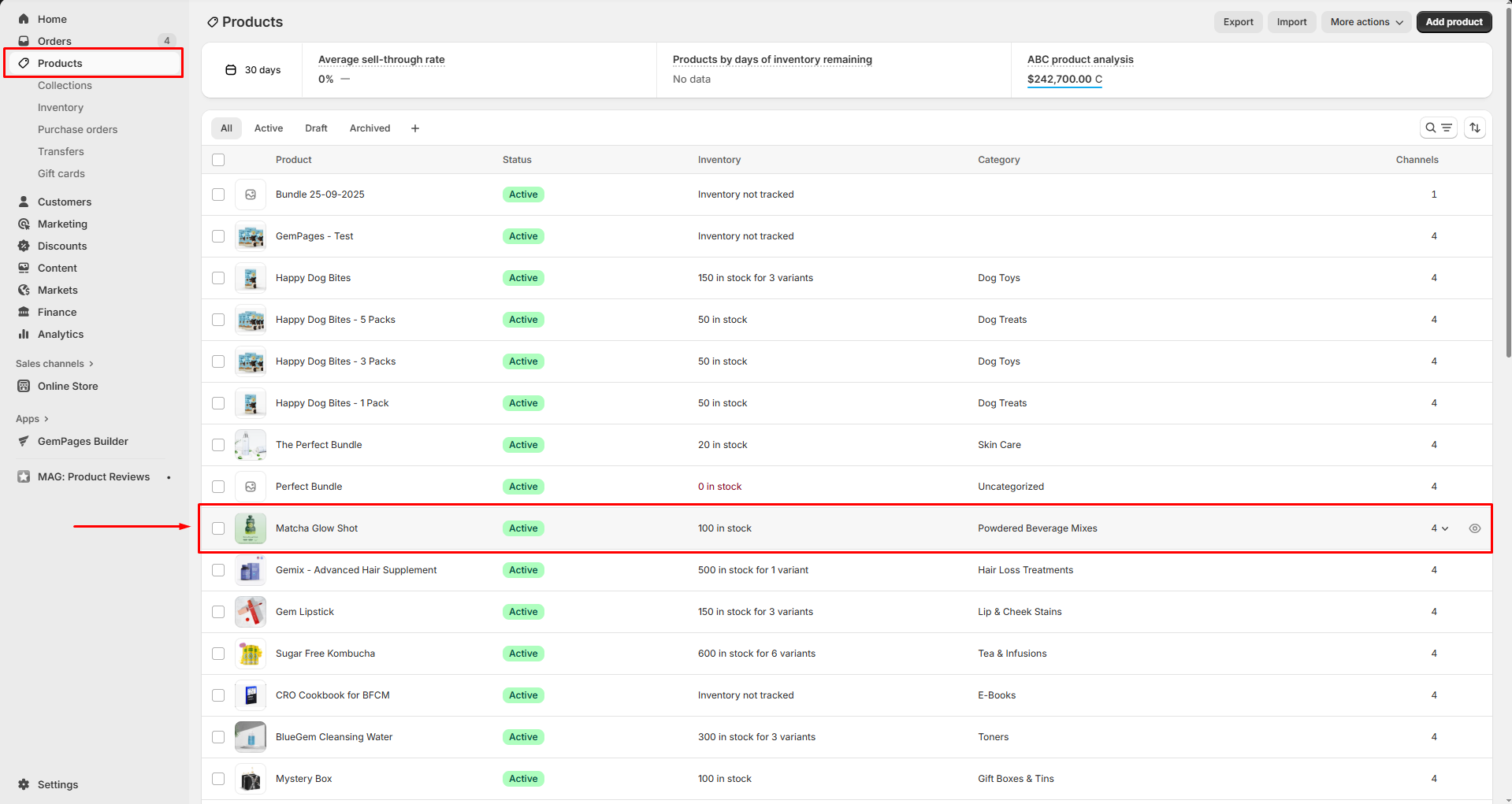
Step 2: Add SKU for your product.
- For single-variant products: Scroll to Inventory, then enter your SKU in the SKU field.
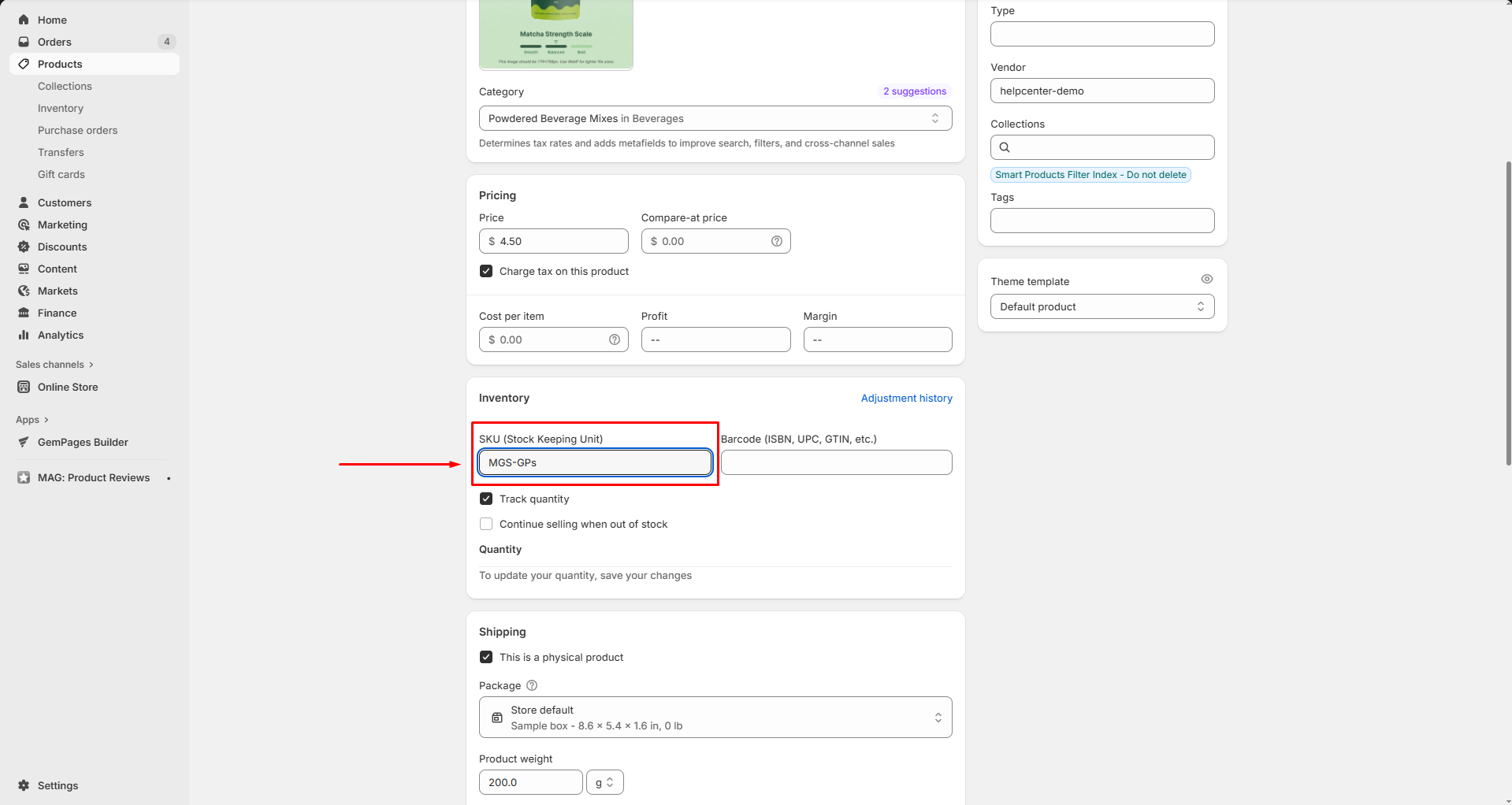
- For products with variants:
Locate the Variants section, select all variants, and click the three-dot button > Edit SKUs.
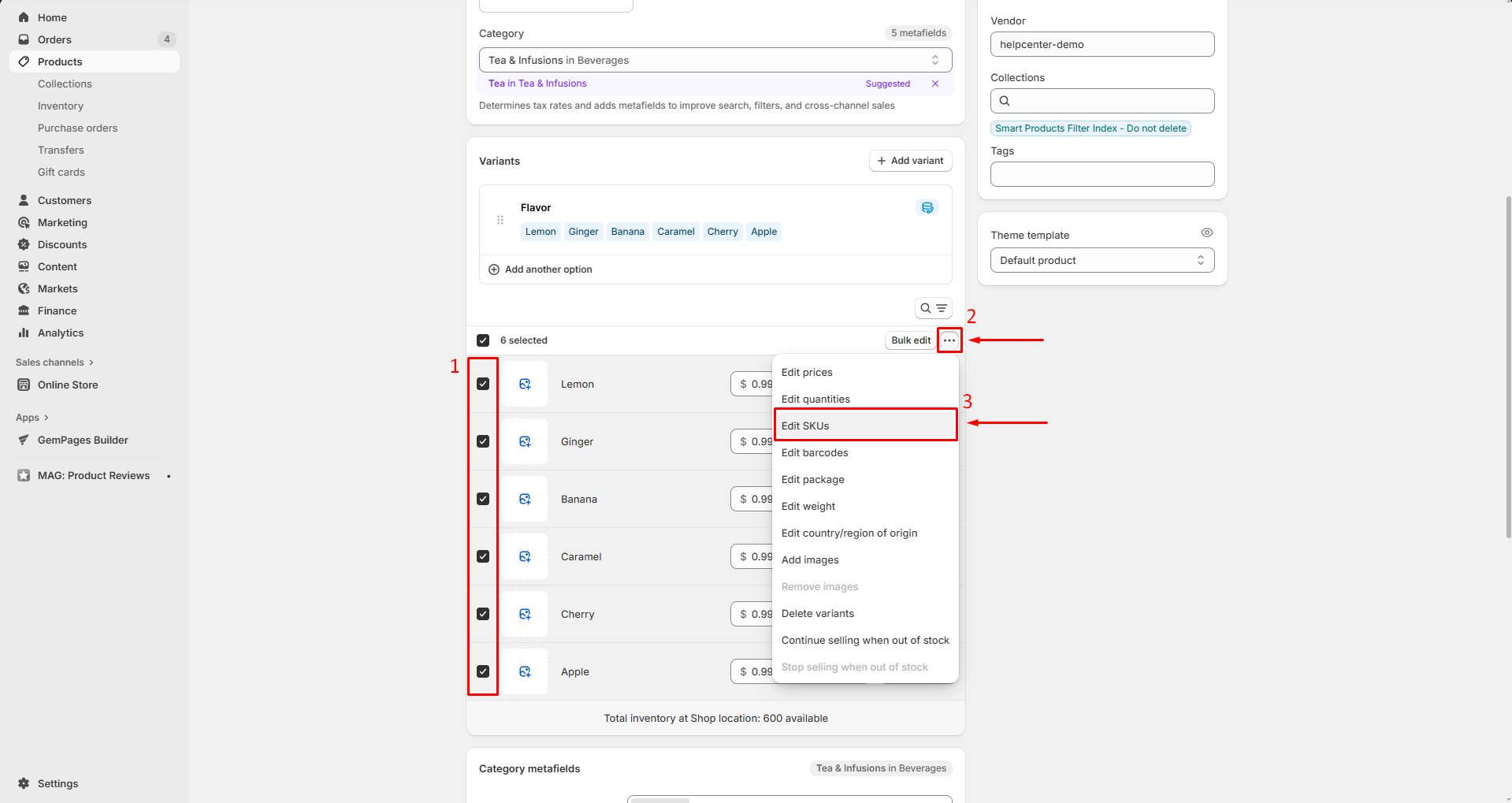
Then, fill SKU for each variant, and click Done to save your updates.
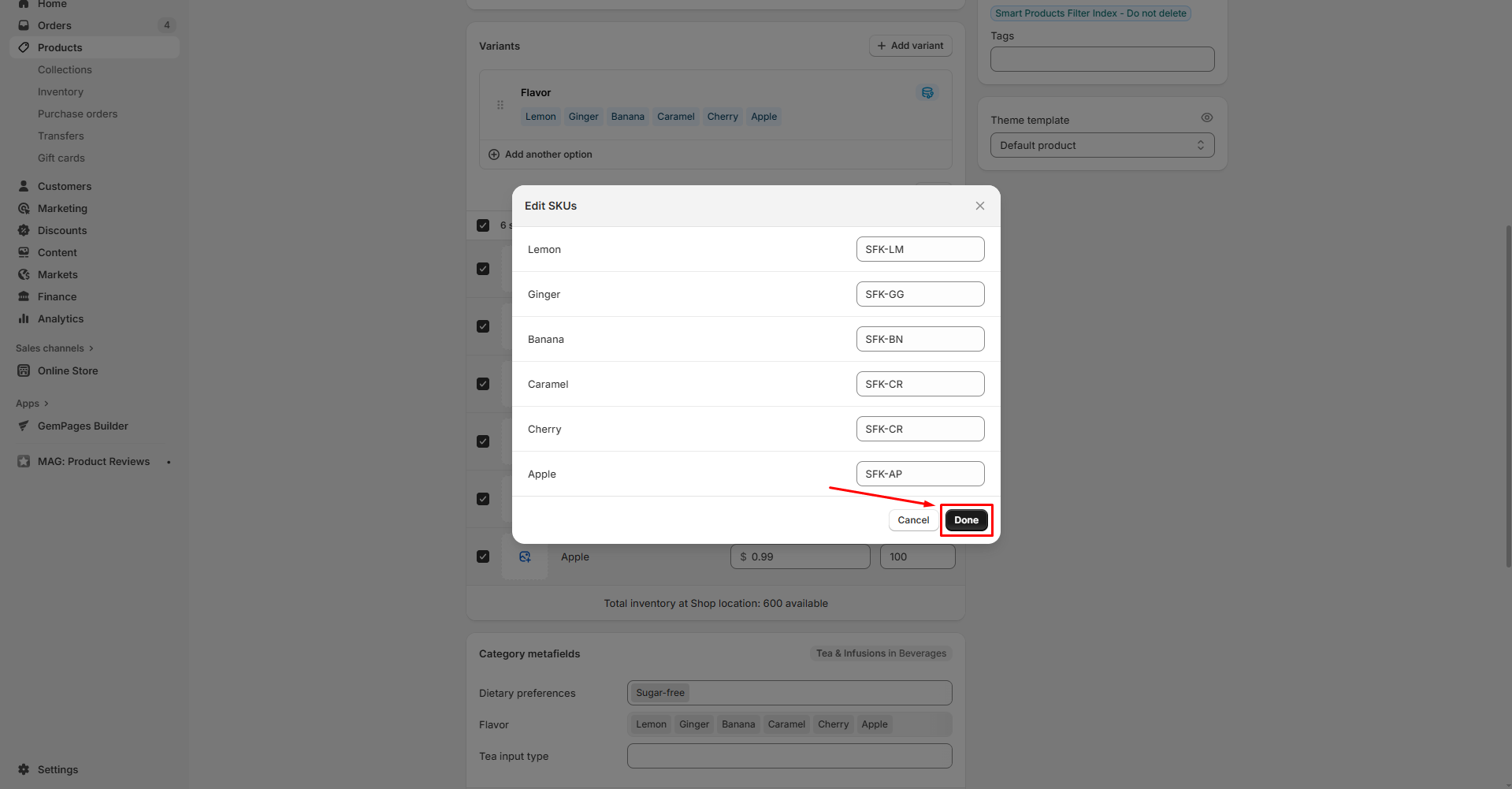
Step 3: Hit Save to apply changes.
Option 2: Bulk edit via Shopify UI
Step 1: Go to the Products tab, select the products you want to add an SKU to, then click Bulk edit.
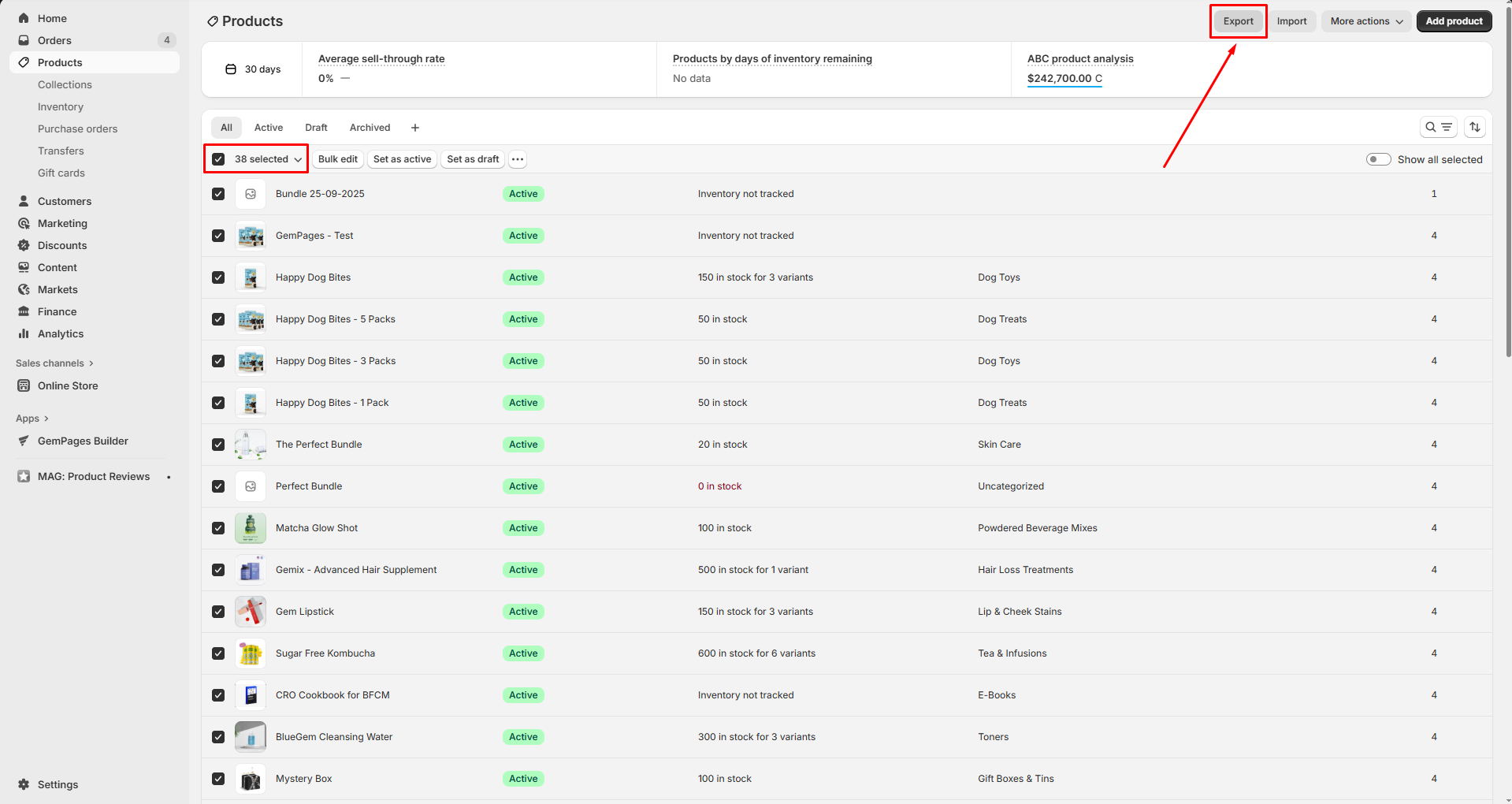
Step 2: Click the Columns button, scroll down to the Inventory section, and select the SKU to add the SKU column to the table.
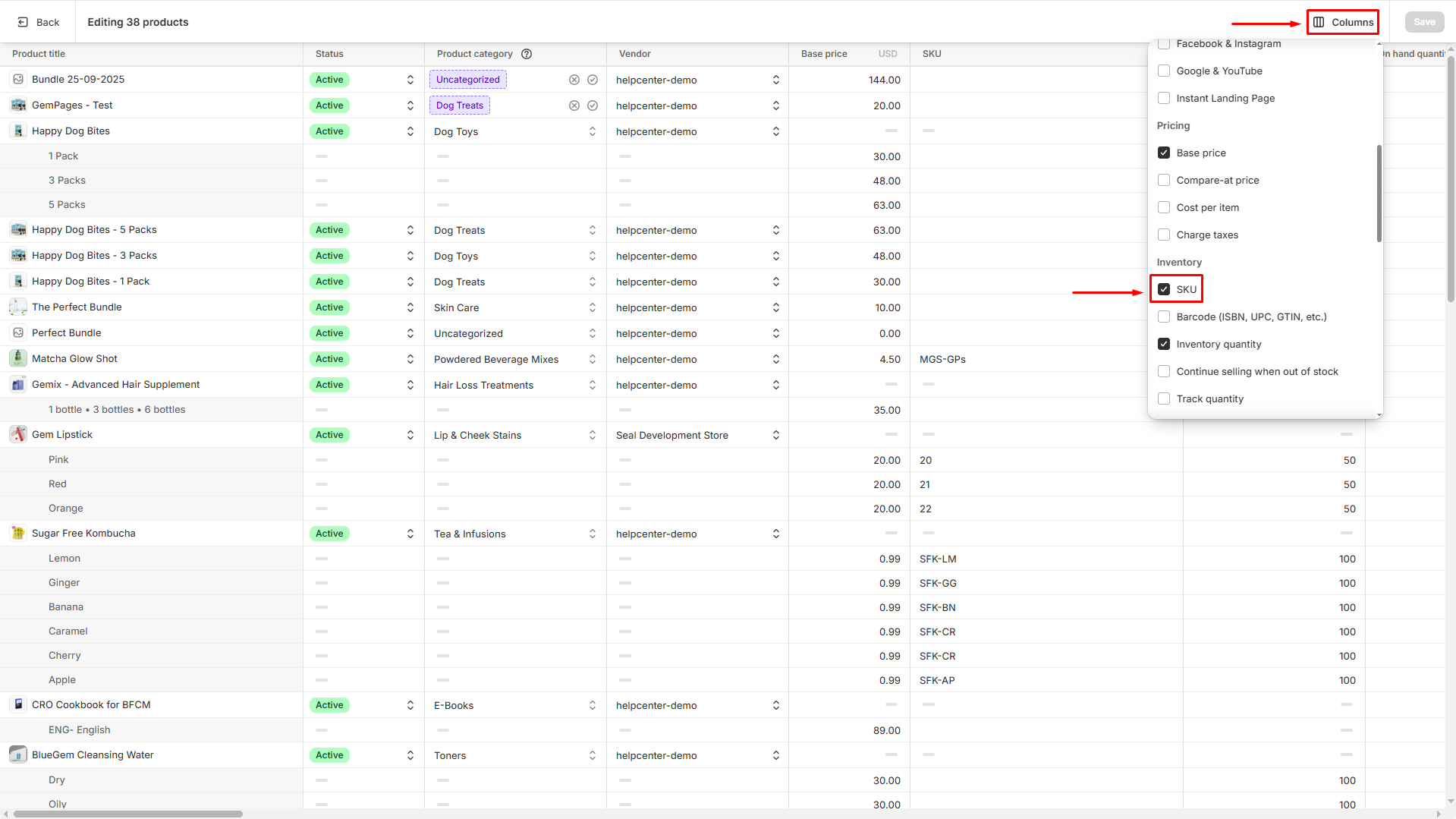
Step 3: Enter the SKU for each product and variant. Once done, click the Save button.
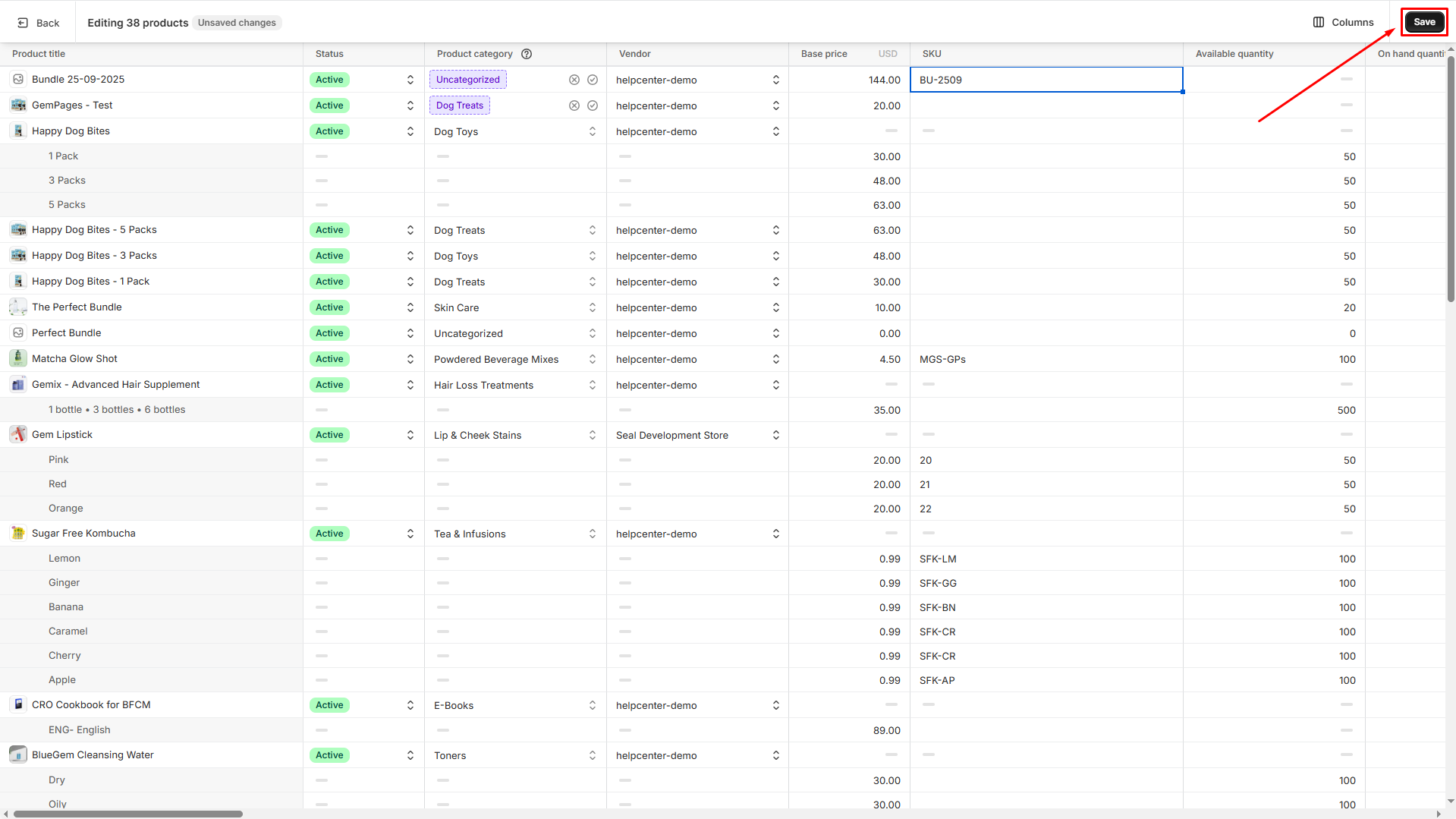
Option 3: CSV import
As Shopify allows updates on up to 50 variants per page before loading more, you can use filters or export CSV for large catalogs.
- Export Shopify’s products CSV.

- Add or edit values in the Variant SKU column for each row (each row is one variant).
- Then, import the file to your Shopify. Currently, Shopify can process up to 50,000 variants at once.
Option 4: SKU Automation Apps
If your store has large catalogs, using a SKU Automation Shopify app is highly recommended.
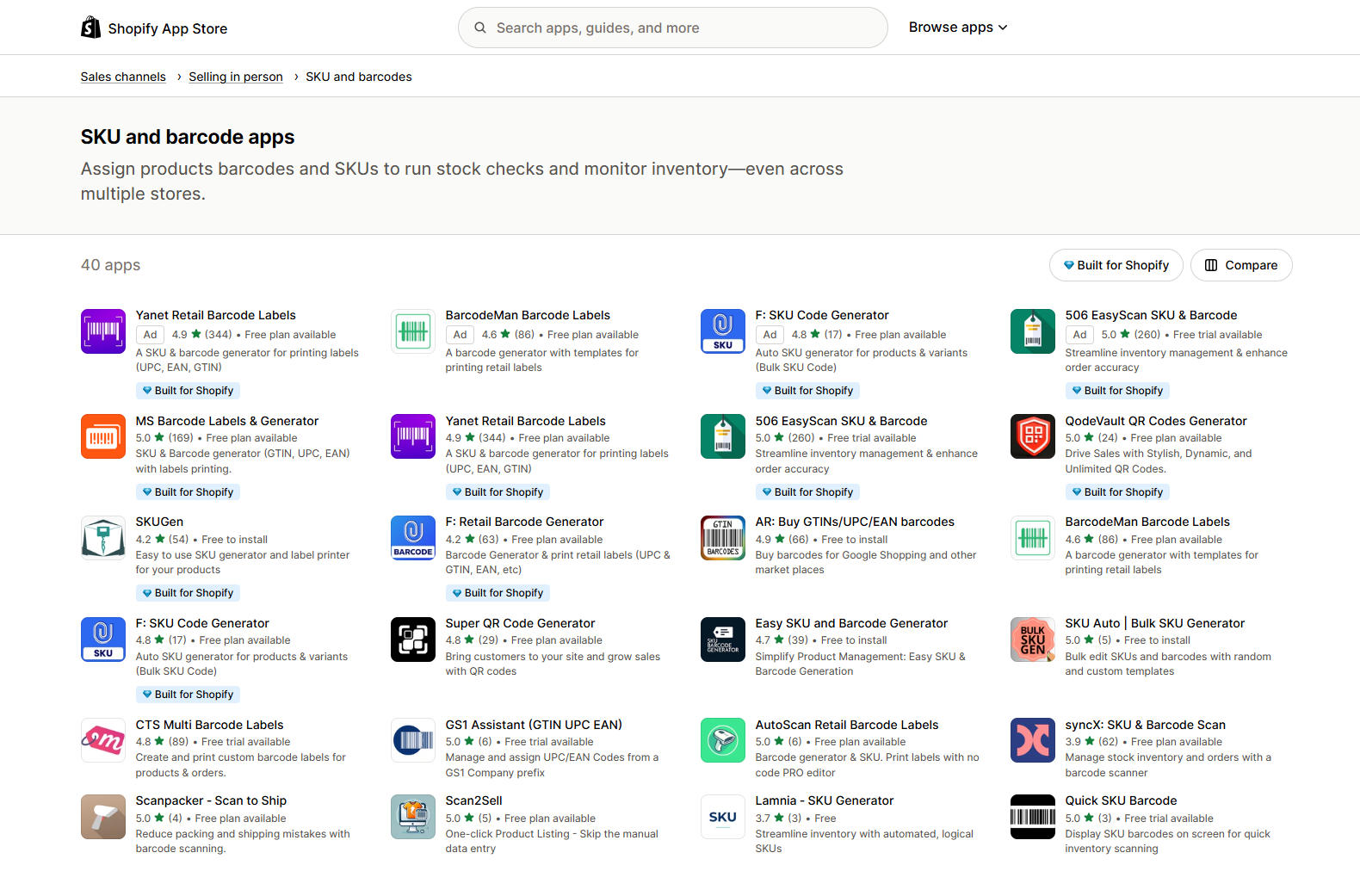
In advanced, several apps, such as SKUGen, Katana, or Matrixify, can auto-assign SKUs based on templates (e.g., BRD‑TYPE‑COL‑SIZ).
Shopify SKU Best Practices
| Best Practice | Why It Matters |
| Use letters, numbers, hyphens, underscores (avoid spaces/special characters) | Ensures compatibility with apps, exports, and barcode scanners |
| Keep SKU short (~6–12 chars, max 15‑20) | Aids readability, prevents truncation in reports |
| Be consistent in format (e.g., BRD‑COL‑SIZ) | Improves segmentation in marketing & analytics |
| Make them unique per variant, never duplicate | Prevents sync errors and confusion with third‑party integrations |
| Document naming logic and train your team | Maintains consistency as your catalog scales |
FAQs about Shopify SKU
1. What is a Shopify SKU?
A Shopify SKU is a merchant‑assigned code used to track stock and sales at the variant level. It’s not customer-facing and differs from a barcode or UPC.
2. Do I need an SKU for each variant?
Yes. Shopify treats SKUs at the variant level, so each variant needs a unique SKU for accurate inventory tracking and fulfillment.
3. How do I add an SKU to a Shopify product or variant?
Go to Products > edit the product > scroll to Inventory or Variants > enter or edit the SKU → Save. For multiple items, use bulk edit or CSV import.
4. How long can an SKU be in Shopify?
Shopify doesn’t enforce a strict character limit, but best practices suggest keeping SKUs to 8–16 characters for readability and system compatibility.
5. Can I bulk add or edit SKUs in Shopify?
Yes, via Shopify’s bulk editor (Products or Inventory pages) or by exporting and editing a product’s CSV, then re‑importing. Apps like Matrixify simplify handling hundreds of variants.
6. Why isn’t the SKU field showing on Shopify’s All Products page?
Shopify’s default Admin view doesn’t show SKUs—use the Bulk Editor or Inventory tab to view or edit SKUs. Column customization is currently not supported in the All Products list.
7. What is the difference between SKU and barcode in Shopify?
A barcode (UPC/EAN) is typically used for scanning and shipping; it must follow global standards. The SKU is an internal, business‑defined code. One variant may have both.
8. Can customers search my store by SKU?
By default, Shopify search doesn’t include SKUs. To enable SKU search in the storefront, customize the theme code or use Shopify’s Search & Discovery app. For admin and POS, the SKU search works out of the box.











Thank you for your comments